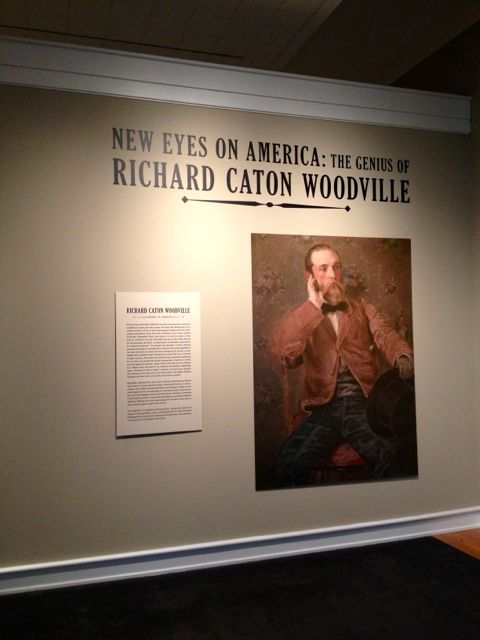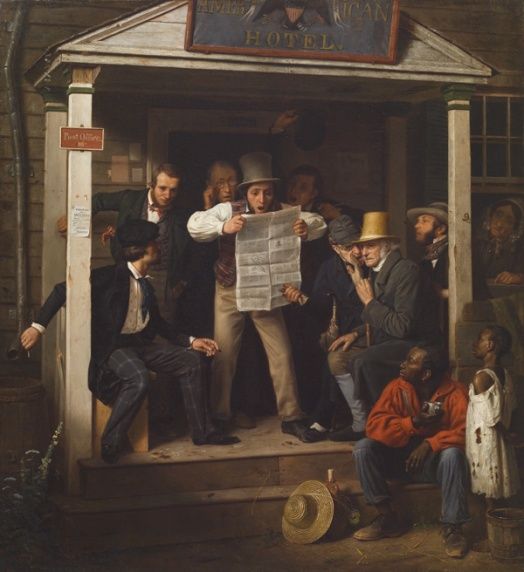
“New Eyes on America: the Genius of Richard Caton Woodville”
“Self-Portrait with Flowered Wallpaper” by Richard Caton Woodville at The Walters Art Museum, Baltimore.
Widely known during the 19th century and acclaimed by the American Art-Union as “perfectly American,” Richard Caton Woodville’s paintings and drawings are receiving much deserved attention in the twenty-first century with the first exhibition of his work in 45 years. Organized by the Walters Art Museum, in Baltimore, Woodville’s hometown, “New Eyes on America: The Genius of Richard Caton Woodville” runs until November 3 at the Mint Museum of Art’s Randolph location.
“New Eyes on America” features 15 of the 16 known paintings by Woodville, along with drawings, watercolors and popular prints based on his works. Over his short career, Woodville created an important body of work that dealt with the major social, economic and political issues of the 19th century, including the events leading up to the Civil War, Manifest Destiny and the Mexican War, new inventions like the railroad and telegraph, and racial disparity. Taking on such weighty topics, Woodville revolutionized American genre painting, telling stories that appealed to a rising middle-class audience for art.
“War News from Mexico” by Richard Caton Woodville. Photo © The Walters Art Museum, Susan Tobin and courtesy of the Crystal Bridges Museum of American Art, Bentonville, Ark.
Overall, the exhibition does an excellent job of placing Woodville’s art within the context of the 19th century and explaining to viewers the historical events that influenced his work. While laid out chronologically, tracing Woodville’s career from the Dusseldorf Academy back to Baltimore, the exhibition does have some layout discrepancies. For instance, the section addressing “the Parlor” and 19th century decorating practices is broken into two rooms rather far apart from each other. This separation decreases the subject’s impact. But the inclusion of popular prints in the exhibition that are based on Woodville’s paintings and were largely distributed by the Art-Union enriches “New Eyes on America.” These works allow for discussion of the economy of art and mass production—two subjects often ignored when praising the genius of the artist.
Mint Museum Randolph: 2730 Randolph Rd., Charlotte; 704-337-2000; mintmuseum.org.
Recent Content
-
Artsarticle ·
-
Artsarticle ·
-
Artsarticle ·


